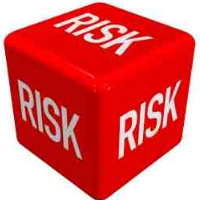The Usual Suspects Dominate New Cal/EPA List of Communities with High Health Risks

It’s bad enough when a community is afflicted with a particular malady—high-poverty rate, hazardous land uses, toxic industries, etc.—but the cumulative effect of these individual issues can be far larger than any single affliction.
The California Environmental Protection Agency (Cal/EPA) has developed, in recent years, a tool for measuring a range of factors that helps better define the impact environmental pollution has on a community. It will be used to help implement the California Global Warming Solutions Act of 2006 by identifying disadvantaged communities eligible for funds raised by auctions of greenhouse gas allowances.
Not surprisingly, the state’s Central Valley dominates the CalEnviroScreen list of communities (identified by zip codes) that have the highest health risks. It echoes previous studies that showed higher mortality rates and lower age expectancies in the area.
Three Fresno zip codes are among the five riskiest places to live. Bakersfield checks in at Number 2 and Stockton grabs the fourth spot. Stockton zips take the ninth and tenth spots, too. Two Los Angeles zips, East L.A. and Baldwin Park, round out the top 10 along with Mono Lake.
The ratings take into consideration a number of factors, including: population, ozone, particulate matter, diesel pollution, pesticides, chemicals from facilities, traffic, impaired water bodies, solid waste facilities, low birth rates, incidents of asthma, age, education, poverty, racial makeup and linguistic isolation.
Put them all together and you get a picture of communities burdened by multiple sources of pollution. The tool is still a work in progress, details of which can be found at Cal/EPA’s Office of Environmental Health Hazard Assessment (OEHHA) website. The second draft of CalEnviroScreen was released in January for public comment.
The California Environmental Justice Alliance, while generally supportive of the Cal/EPA effort, has expressed reservations about the agency’s methodology. Some of its suggestions have already been incorporated in the tool.
The group thinks that zip code designations are too broad and miss pockets of devastation that have been balanced out by less-afflicted neighbors. Environmental hazards that are in close proximity to sensitive sites, but not in the immediate zone, aren’t given sufficient consideration. Critical sources of pollution are missing from the assessment, including airports, rail yards, ports and shipyards. Smaller sources of hazard, like auto body shops, are also off the radar, according to the Alliance.
Environmental justice advocates have championed cumulative assessments of environmental hazard because, in the words of the Alliance, “low-income communities and communities of color across California are bombarded on a daily basis with emissions from toxic industries, surrounded by hazardous land-uses, and struggling with high poverty rates.”
The following are the Top 20 communities on the CalEnviroScreen list. The “Score” is a pollution index weighted by population characteristics. The higher the number, the more negatively impacted the community.
| Zip code | City | Score |
| 93706 | Fresno | 72.80 |
| 93307 | Bakersfield | 69.66 |
| 93725 | Fresno | 67.23 |
| 95205 | Stockton | 64.38 |
| 93702 | Fresno | 63.00 |
| 95341 | Lee Vining (Mono Lake) | 61.77 |
| 90023 | East Los Angeles | 61.50 |
| 91706 | Baldwin Park (Los Angeles) | 61.32 |
| 95206 | Stockton | 60.80 |
| 95203 | Stockton | 59.20 |
| 90220 | Compton | 58.10 |
| 92408 | San Bernardino | 57.67 |
| 93662 | Selma | 57.60 |
| 90248 | Gardena | 56.98 |
| 92335 | Fontana | 56.21 |
| 90805 | Long Beach | 56.16 |
| 95351 | Modesto | 55.76 |
| 90810 | Long Beach | 55.50 |
| 90201 | Bell | 55.44 |
| 91733 | South El Monte | 55.38 |
–Ken Broder
To Learn More:
California EPA Puts West Fresno atop Cities with High Health Risks (by Mark Grossi, Fresno Bee)
California Environmental Health Screening Tool (Office of Environmental Health Hazard Assessment)
Comments on CalEnviroScreen (California Environmental Justice Alliance) (pdf)
- Top Stories
- Controversies
- Where is the Money Going?
- California and the Nation
- Appointments and Resignations
- Unusual News
- Latest News
- California Forbids U.S. Immigration Agents from Pretending to be Police
- California Lawmakers Urged to Strip “Self-Dealing” Tax Board of Its Duties
- Big Oil’s Grip on California
- Santa Cruz Police See Homeland Security Betrayal in Use of Gang Roundup as Cover for Immigration Raid
- Oil Companies Face Deadline to Stop Polluting California Groundwater





